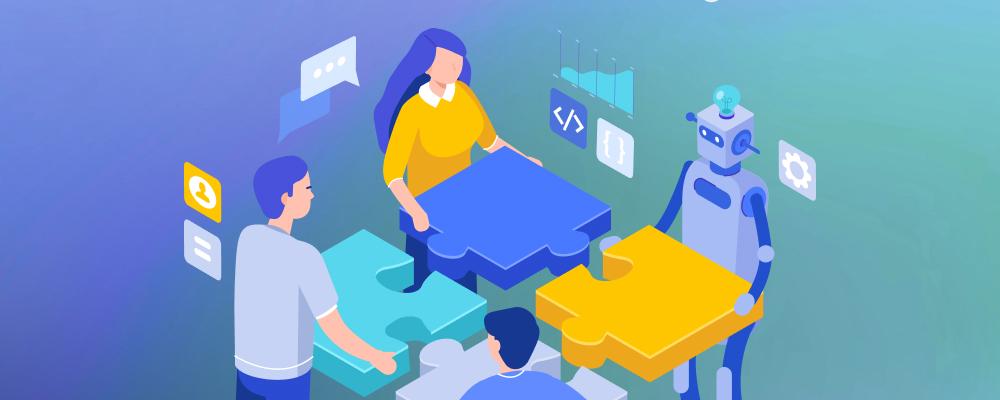
AI is Here. We're Still in Charge.
TL;DR: With the paradigm shift in software development driven by AI, designing intuitive user experiences and generating smart ideas is fast becoming the new currency, more valuable even than traditional coding skills. That’s why humans won’t be replaced by AI – at least not anytime soon.
Chances are, you’ve seen it in person or online: the provocative billboard in San Francisco shouting “Stop Hiring Humans!” That campaign generated millions of impressions, sparked heated debate, and drove $2M in new ARR for a startup that sells AI agents for use as virtual employees.
The stunt tapped into growing anxiety across the tech world: as AI becomes more powerful, will it replace human workers altogether?
If you’ve worked in tech over the past year, chances are you’ve already started experimenting with AI tools. Maybe you’ve used GitHub Copilot to speed through boilerplate code, or let ChatGPT take a first crack at documentation or sprint planning. AI is no longer a fringe experiment. Today, it’s everywhere – quickly becoming a standard part of how we build software.
And with that paradigm shift, many companies are reorganizing teams, automating creative work, even phasing out roles that were previously considered essential. Some are leaning heavily on AI to generate client deliverables, everything from strategy docs to UX copy.
At ICS, We're Taking a Different Route
We see AI not as a replacement for people, but rather a powerful collaborator. One that, when used strategically, can help us do our best work faster without diluting its quality or creativity.
AI can write code. It can summarize documentation. It can even guess at your next line in a script or your next log statement. We use that. Tools like Claude Code and Cursor help our developers accelerate the mundane parts of a project like syntax and repetitive function patterns so they can focus on higher-value tasks around, say architecture and performance.
In other words, we’re building systems where AI handles what it's good at – repetition, speed, prediction – freeing our teams to focus on the work humans do best, like asking the right questions and delivering meaningful experiences.
Helping Our Customers Join the AI Revolution
A growing number of our customers have told us they want to “use AI” but aren’t really sure how – or even if they should. So we help them figure it out. We start by asking:
- What part of your workflow could benefit from intelligence or automation?
- Where do users expect AI and where would it feel intrusive?
- Are there compliance, brand or data risks to consider?
Just because a model can generate interface text or suggest user flows doesn’t mean it understands people. But we do. We use these conversations to learn as much as we can about our customers so we can identify appropriate use cases, and design AI integrations that make sense – not just technically, but strategically and ethically, too.
From there, we help them build AI features that are valuable but not overengineered. The result? Smarter systems without the fear of losing human oversight.
Creating More Value with a Human-AI Collaboration
As we’ve integrated AI into our own workflow, we’ve redefined our roles rather than diminish them. Our developers are now architects and reviewers, shaping the direction of projects with a sharper focus. Our designers have transformed into curators of experience, ensuring every interaction feels intentional. Our software testers are quality champions, using AI tools to predict, optimize and enhance user experience while ensuring our systems are robust and resilient.
It’s not about using AI as an excuse to cut headcount or replace human judgment with algorithms. It’s not about doing less work. It’s about shifting to higher-value activities where we can make a real impact. We’re actively building a culture where AI makes us even better. When we bring AI into your project, it’s not to cut corners – it’s to give you more. More speed, more clarity, and more space to focus on what truly sets your product apart.
The bottom line? We’re using AI with intention – not as a replacement, but as a partner – so everyone wins. Our team works smarter, our customers get better outcomes, and the products we build together are faster, sharper and more human where it counts.
For more on how AI and tools like Claude Code are becoming powerful force multipliers and evolving software development, read our blog The End of Software Engineering? Not Quite — But AI is Changing the Game.